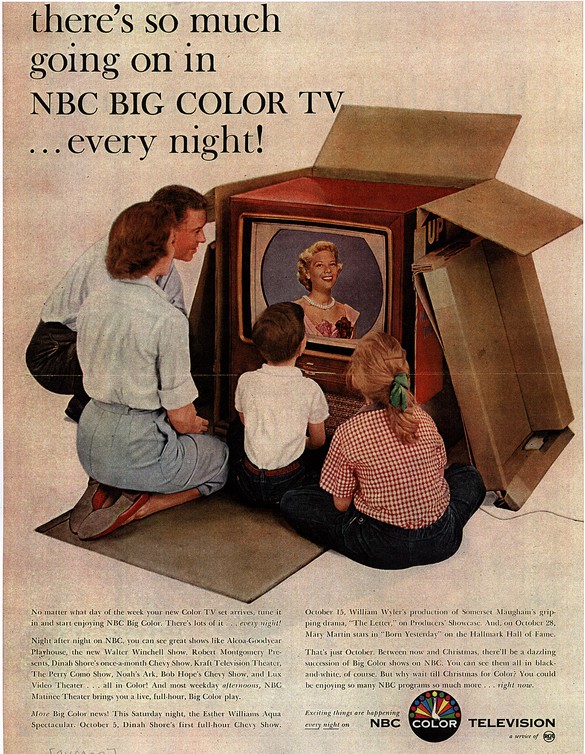|
Ads depicting families' diversity more
realistically
Baltimore Sun
/ November 24, 2003
 Advertising
long relied on Norman Rockwell images of America because mainstream
advertisers tend to be conservative, fearful of offending someone
and thwarting millions in ad spending. But marketers - and their
corporate clients - appear to be increasingly willing to portray,
and pitch products to, a more diverse nation. Advertising
long relied on Norman Rockwell images of America because mainstream
advertisers tend to be conservative, fearful of offending someone
and thwarting millions in ad spending. But marketers - and their
corporate clients - appear to be increasingly willing to portray,
and pitch products to, a more diverse nation.
With TV sitcoms and "reality shows" portraying all manner of
relationships and with urban newspapers adding wedding announcements
of same-sex marriages, advertisers, some say, are just catching up
with the rest of society.
Last week, the Massachusetts Supreme Judicial Court ruled the
commonwealth must extend to same-sex couples the same rights to
marriage it grants to heterosexuals in a verdict that could
influence other state and federal courts.
"Marketing people have to relate to the environment as it is, not
how you hope it would be," said Eugene Fram, a marketing professor
at the Rochester Institute of Technology.
"Advertising largely mirrors accepted behaviors and standards in
society," said Scott Rasmussen, executive vice president and chief
creative officer at Carton, Donofrio and Partners Inc., a Baltimore
ad agency. "As it has loosened up in society at large, marketers
feel comfortable enough to expose some of that in their marketing
message. They need to be assured it's a notion in society at large
before they take that risk."
America, in real life, long ago moved past Leave It to Beaver
imagery that defined much consumer advertising. But the people who
paid for, and created, advertising as late as a decade ago feared
that portrayals seen as nontraditional would anger interest groups
or repel some customers.
But that view is changing - as the country changes. U.S. Census and
other data shows more singles living together, fewer couples having
children, more racially mixed couples, more remarriages.
"I think there is definitely a theme in advertising to return to
real people," said Samantha Ettus, a branding expert and president
of Ettus Media Management in New York. "None of these images are
revolutionary in real-life America. America has looked diverse for a
number of years.
This year, Ikea Corp., the Swedish furniture company, began
displaying in its showrooms custom-designed home layouts expressly
made for different "types" of families.
"When two families become one, it can be a delicate balance," said a
sign at the chain's new College Park store, describing a layout for
a "blended" family. "Furnishing your new home together is the chance
to let each of you express personal needs and desires."
"The overall idea is to reflect the customers we have," said Clive
Cashman, an Ikea spokesman. "That means showing all kinds of life
stages and situations. What we aim to let people know is that we
understand life in their home."
The shift is not just European sensibility at play: Friendly Ice
Cream Corp. had a similar motivation in mind when the
Massachusetts-based restaurant chain developed its "You and Me and
Friendly's" television campaign in 2001.
An ad depicting a man asking out his date and her young daughter was
one of 21 commercials Friendly's developed to connect more
intimately with consumers. Others portrayed a mom returning to work
outside the home, and an older brother taking his sister out for ice
cream to soothe a first heartbreak.
"We're trying to focus on real-life situations," said Peter E. Bell,
Friendly senior director of marketing. "We're not looking to create
a hokey commercial where young Johnny learns to ride a bike. Every
commercial we've done is based on real stories that have happened to
actual people."
No one is suggesting that advertisers have shed all apprehension.
For instance, many companies still tiptoe around using gay subjects,
industry experts said.
"They're afraid of backlash from the predominantly straight
population," said Michael B. Mazis, a professor of marketing at the
Kogod School of Business at American University in Washington.
Instead, companies will air commercials during programs that
register as popular with same-sex couples or place billboards in
neighborhoods frequented by same-sex couples.
"It's called the 'pink dollar,'" said Bloom, the trade publication
editor. "It's known that gay men in particular tend to be a wealthy
demographic. The market has unashamedly targeted them, but that
doesn't mean they've represented them in mainstream advertising."
"A lot of time in advertising you see glossy images that don't
reflect reality," said Giunero Floro, vice president of advertising
and brand management for American Express Financial Advisers Inc.
"We tried to pick those individuals that people could relate to."
Consumers are more willing to see a company in a positive light, and
consider their products for purchase, if they feel that company is
personally reaching out to them, marketing executives said.
"They need to feel we're speaking their language and can meet their
needs," Floro said |